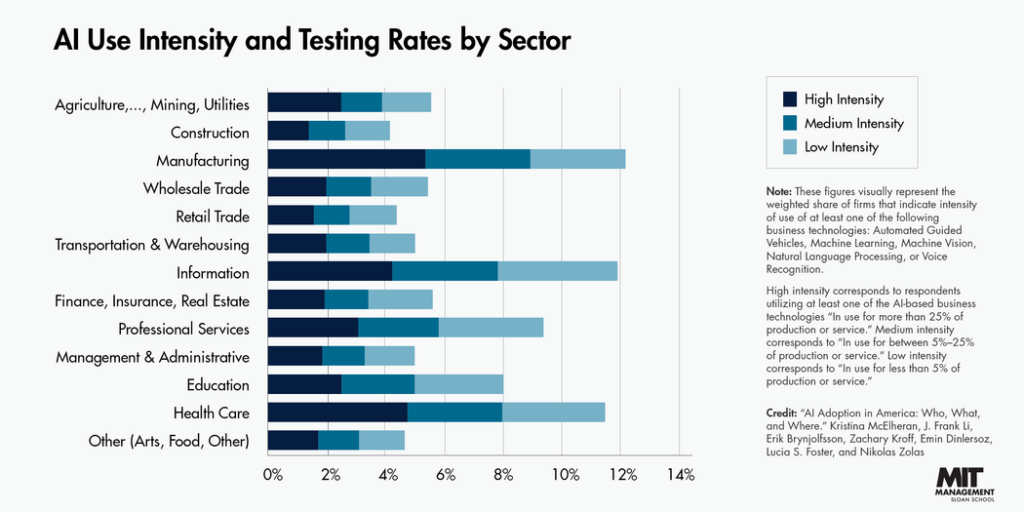Companies that successfully integrate AI can automate routine tasks, derive valuable insights from data, enhance customer experiences, and even create new business models. However, AI adoption is not a one-size-fits-all process. It requires careful assessment of an organization’s readiness, maturity level, and feasibility for implementation.
As industries worldwide become more data-driven, the ability to leverage AI effectively can dictate an enterprise’s long-term success. Many companies find themselves at different stages of AI maturity, with some only beginning their journey while others are pushing the boundaries of AI-driven transformation. This article explores the significance of AI adoption, outlines various levels of AI maturity, and discusses the importance of feasibility diagnostics to ensure a smooth AI transition. Additionally, it provides insights into best practices for structuring AI implementation strategies that drive long-term success.
Understanding the Importance of AI Adoption
AI adoption is rapidly accelerating across industries, driven by machine learning, data processing, and automation advances. According to Accenture, organizations that reach higher AI maturity levels outperform their competitors by embedding AI deeply into their strategies.
Key benefits of AI adoption include:
- Operational Efficiency: Automating repetitive tasks and streamlining workflows to increase productivity.
- Data-Driven Decision Making: Utilizing predictive analytics to optimize business strategies and decision-making processes.
- Enhanced Customer Experience: AI-driven personalization and intelligent recommendations that improve engagement.
- Competitive Differentiation: Gaining a strategic advantage through AI-driven insights, allowing businesses to outperform their competitors.
- New Revenue Streams: Monetizing data and creating AI-powered products/services that open new market opportunities.
- Risk Mitigation: Enhancing cybersecurity, fraud detection, and compliance management through AI-powered risk analysis.
Despite its advantages, AI implementation requires an assessment of organizational readiness to determine the best approach for integration. Many businesses struggle with bridging the gap between AI exploration and actual deployment, making structured evaluation essential.

Exploring AI Maturity Levels
To successfully adopt AI, organizations must understand their current maturity level and establish a roadmap for progression. AI maturity models provide structured frameworks for assessing AI capabilities and guiding future development.
The Five Levels of AI Maturity
Several AI maturity models exist, including Gartner’s AI Maturity Model, which categorizes organizations into five levels:
- Initiator: Organizations at this stage are aware of AI but have not initiated any formal projects. AI exploration may be taking place but with no clear direction.
- Implementer: Some pilot AI projects exist, often isolated in specific departments without cross-functional implementation.
- Integrator: AI is embedded into business processes and decision-making, leading to improved efficiency and measurable performance gains.
- Strategist: AI adoption aligns with strategic goals, enhancing efficiency, customer satisfaction, and competitiveness.
- Visionary: AI is a core part of business strategy, driving innovation, business model transformation, and industry disruption.
Similarly, Deloitte’s AI Readiness Framework provides insights into organizational capabilities required for AI-driven transformation (Deloitte AI Readiness).
Organizations must evaluate their position within these frameworks and develop structured plans to move forward. AI maturity is not just about adopting technology; it is about aligning AI initiatives with broader business goals and ensuring scalability.
Conducting Feasibility and Readiness Diagnostics
Before implementing AI, businesses must conduct an in-depth readiness assessment to ensure they have the necessary infrastructure, skills, and governance in place. A structured diagnostic evaluates key dimensions such as:
1. Strategic Alignment
- Does the organization have a defined AI strategy that aligns with business objectives?
- Is there executive sponsorship for AI initiatives?
- How well is AI integrated into the company’s long-term vision?
2. Data Infrastructure and Governance
- Are data pipelines well-structured to support AI-driven decision-making?
- What measures are in place to ensure data quality, privacy, and compliance?
- How accessible is structured and unstructured data for AI applications?
3. Technological Capabilities
- What existing AI and machine learning tools are in use?
- Does the IT infrastructure support AI scalability?
- Are cloud computing and edge AI capabilities in place for seamless AI integration?
4. Talent and Workforce Readiness
- Does the organization have the necessary AI expertise?
- Are there ongoing training programs for employees on AI adoption?
- Are AI roles clearly defined within teams?
5. Organizational Culture and Change Management
- How receptive is the organization to AI-driven transformation?
- What strategies are in place to overcome resistance to change?
- Is leadership actively fostering a data-driven and AI-empowered culture?
Using Cisco’s AI Readiness Assessment, organizations can measure their preparedness across these dimensions (Cisco AI Readiness).
AI Adoption Framework for Businesses
For companies seeking structured AI implementation, an AI Competitive Edge Scale provides a roadmap:
| 1 | Initiator | Limited AI use, mostly manual processes | AI knowledge exists but not operationalized |
| 2 | Implementer | Basic AI-driven task automation (RPA, chatbots) | Pilots in progress, AI is functionally useful but not strategic |
| 3 | Integrator | AI is embedded into workflows, influencing real-time decisions | AI strategy aligns with business goals, data-driven culture emerges |
| 4 | Strategist | Competitive differentiation through AI | Proprietary AI models, automation at scale |
| 5 | Visionary | AI-first organization, market disruptor | AI transforms business models and operations |
This framework enables businesses to assess their position and take steps toward AI maturity.
Key Takeaways and Next Steps
AI is not just a technology upgrade—it is a strategic imperative. Organizations must:
- Assess their AI maturity level using established frameworks.
- Conduct feasibility diagnostics to identify readiness gaps.
- Develop a structured AI adoption roadmap aligned with business objectives.
- Invest in skills, data, and technology to ensure sustainable AI transformation.
- Encourage AI literacy and governance to maintain ethical AI use and compliance.
By taking a structured approach, businesses can leverage AI as a catalyst for growth, innovation, and competitive advantage. Organizations interested in evaluating their AI readiness can start with free assessment tools or expert-led diagnostics.
🚀 Are you ready to assess your AI maturity ? Contact us for a personalized AI diagnostic.





